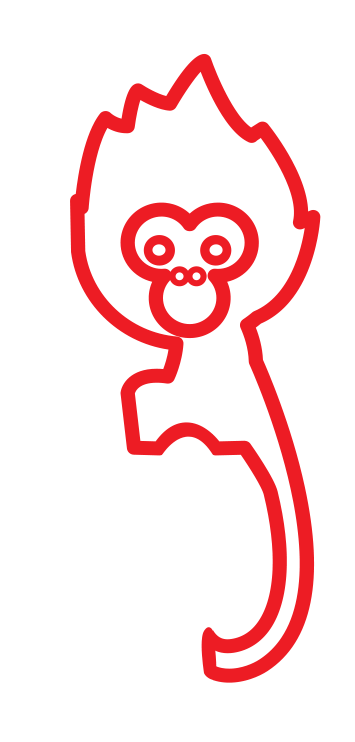
Maximizing ROI in Hospital Facility Management
Effective hospital facility management is crucial for the seamless operation of healthcare facilities. With the rising costs and complexities in healthcare, maximizing ROI in hospital facility management is more important than ever.
The LazyMonkey approach is an innovative way to streamline operations and improve efficiency, leading to significant cost savings.
Importance of Hospital Facility Management
Hospital facility management is more than just maintaining buildings. It encompasses everything from energy management to ensuring compliance with health regulations.
Efficient hospital facility management directly impacts patient care quality, safety, and overall operational efficiency. When hospitals effectively manage their facilities, they can reduce operational costs and enhance the patient experience.
Given the critical nature of these facilities, even minor disruptions can have significant consequences. That’s where maximizing ROI becomes essential, as every dollar saved can be redirected toward patient care improvements.
ROI in Hospital Facility Management
Return on Investment (ROI) in hospital facility management refers to the financial return that a healthcare facility gains from its investments in managing and maintaining its facilities. In simpler terms.
It’s about ensuring that the money spent on facility management yields tangible benefits. Either through cost savings or improved efficiency. For hospitals, maximizing ROI means reducing costs while maintaining or improving the quality of services.
This is achieved by optimizing resources, implementing efficient processes, and leveraging technology to enhance facility management.
The LazyMonkey approach offers a strategic framework for achieving these goals, ensuring that hospital facilities are managed in a way that maximizes their value.
LazyMonkey Approach to Maximizing ROI
The LazyMonkey approach is all about smart, efficient, and effective hospital facility management. It focuses on minimizing effort while maximizing output, ensuring that every action taken within the facility contributes to the overall goal of improving ROI.
This approach is built on several key principles that can transform how hospitals manage their facilities.
1. Streamlining Operations
One of the core tenets of the LazyMonkey approach is streamlining operations. By identifying and eliminating inefficiencies, hospitals can reduce wasted resources and improve productivity.
This involves automating routine tasks, optimizing staff schedules, and using data analytics to track and improve facility performance.
For instance, automating HVAC systems can significantly reduce energy costs, while predictive maintenance can prevent costly equipment breakdowns.
These operational improvements directly contribute to maximizing ROI by lowering operational costs and improving resource allocation.
2. Leveraging Technology for Efficiency
Technology plays a crucial role in the LazyMonkey approach. From Building Management Systems (BMS) to advanced data analytics, technology can provide the insights needed to optimize hospital facility management.
BMS allows for centralized control of building systems, such as lighting, heating, and air conditioning, leading to significant energy savings. Moreover, IoT devices can monitor various aspects of the facility in real time.
Providing data that can be used to optimize operations. For example, smart sensors can detect leaks or equipment failures early, preventing costly damage and downtime.
By leveraging technology, hospitals can maximize their ROI by reducing operational costs and improving efficiency.
4. Sustainable Facility Management
Sustainability is another key aspect of the LazyMonkey approach. Sustainable hospital facility management not only reduces environmental impact but also lowers operational costs.
Energy-efficient lighting, water-saving fixtures, and renewable energy sources can all contribute to a more sustainable and cost-effective facility. Implementing a green building strategy can also lead to long-term savings.
For instance, hospitals that invest in energy-efficient infrastructure can see a significant reduction in utility costs. Additionally, sustainable practices often qualify for government incentives, further enhancing ROI.
5. Staff Training and Development
While technology and operations are crucial, the role of staff in hospital facility management cannot be overlooked. The LazyMonkey approach emphasizes the importance of staff training and development. Well-trained staff are more efficient.
Better at problem-solving, and can contribute to a more effective facility management strategy. Regular training sessions, coupled with clear communication of facility management goals, ensure that everyone is on the same page.
By investing in staff development, hospitals can improve the efficiency of their facility management teams, leading to better outcomes and a higher ROI.
6. Cost Management Strategies
Effective cost management is central to maximizing ROI in hospital facility management. The LazyMonkey approach advocates for a proactive approach to cost management, where potential savings are identified and implemented before costs spiral out of control.
This includes negotiating better contracts with suppliers, reducing waste, and optimizing inventory management. For example, hospitals can save on costs by purchasing energy-efficient equipment that reduces utility bills over time.
Additionally, implementing a robust maintenance schedule can prevent costly repairs and extend the lifespan of equipment.
Role of Predictive Maintenance
Predictive maintenance is a game-changer in hospital facility management. By using data to predict when equipment will fail, hospitals can schedule maintenance at the most convenient times, minimizing disruption and reducing costs.
The LazyMonkey approach integrates predictive maintenance as a core component of its strategy, ensuring that hospital facilities run smoothly and efficiently. For example, by analyzing data from HVAC systems, hospitals can predict when filters need to be replaced or when a system is likely to fail.
This not only prevents unexpected breakdowns but also reduces the need for costly emergency repairs. In turn, this contributes to a higher ROI by reducing maintenance costs and extending the lifespan of equipment.
1. Enhancing Patient Experience through Facility Management
Maximizing ROI in hospital facility management isn’t just about saving money—it’s also about improving the patient experience. The LazyMonkey approach recognizes that a well-managed facility directly contributes to patient satisfaction.
Clean, comfortable, and well-maintained facilities are crucial for creating a positive patient experience. For instance, well-maintained waiting areas, efficient heating and cooling systems, and clean facilities can significantly enhance patient comfort.
When patients have a positive experience, they are more likely to return and recommend the hospital to others, leading to increased revenue and a higher ROI.
2. Data-Driven Decision-Making
Data-driven decision-making is at the heart of the LazyMonkey approach. By analyzing data on facility performance, hospitals can make informed decisions that enhance efficiency and reduce costs. This involves tracking key performance indicators (KPIs) such as energy usage, maintenance costs, and patient satisfaction.
For example, data analysis might reveal that certain areas of the hospital are underutilized, allowing management to reallocate resources more effectively. By making decisions based on accurate data, hospitals can avoid costly mistakes and ensure that their facility management strategies are aligned with their ROI goals.
3. Risk Management and Compliance
Risk management and compliance are critical components of hospital facility management. The LazyMonkey approach emphasizes the importance of staying compliant with health and safety regulations, as non-compliance can lead to costly fines and legal issues.
By proactively managing risks, hospitals can avoid these pitfalls and protect their ROI. This includes regular safety audits, ensuring that all equipment meets regulatory standards, and maintaining comprehensive records of all maintenance activities.
By staying ahead of potential risks, hospitals can ensure that their facilities remain safe, compliant, and cost-effective.
4. Energy Management for ROI Maximization
Energy management is a key area where hospitals can significantly improve their ROI. The LazyMonkey approach includes a strong focus on energy efficiency, as reducing energy consumption directly translates to cost savings.
This involves implementing energy-efficient technologies, optimizing HVAC systems, and using renewable energy sources where possible. For instance, hospitals can install energy-efficient lighting systems that automatically adjust based on occupancy.
This simple change can lead to significant energy savings over time. Additionally, by investing in solar panels or other renewable energy sources, hospitals can reduce their reliance on traditional energy sources, further improving their ROI.
5. Long-Term Strategic Planning
Maximizing ROI in hospital facility management requires a long-term strategic approach. The LazyMonkey strategy includes planning for future needs, such as potential expansions or upgrades, and ensuring that the facility management plan is adaptable to changing circumstances.
For example, hospitals that plan for future growth can invest in scalable infrastructure that can accommodate increased demand without requiring costly renovations. By thinking ahead, hospitals can avoid unnecessary expenses and ensure that their facility management strategies remain effective over the long term.
6. Vendor Management and Outsourcing
Effective vendor management is another important aspect of the LazyMonkey approach. By carefully selecting vendors and negotiating favorable contracts, hospitals can reduce costs and ensure that they receive high-quality services.
Outsourcing certain facility management tasks, such as cleaning or landscaping, can also be a cost-effective strategy. For instance, outsourcing non-core tasks to specialized vendors can free up internal resources, allowing hospital staff to focus on more critical activities.
Additionally, by managing vendors effectively, hospitals can ensure that they receive the best possible value for their money, further enhancing ROI.
Implementing Best Practices in Facility Management
The LazyMonkey approach encourages hospitals to adopt industry best practices in facility management. This includes following guidelines for energy efficiency, sustainability, and safety. By adhering to these best practices, hospitals can ensure that their facilities are managed in a way that maximizes ROI.
For example, hospitals that implement best practices in waste management can reduce disposal costs and minimize their environmental impact. Similarly, by following best practices in energy management, hospitals can achieve significant cost savings while reducing their carbon footprint.
Continuous Improvement and Feedback Loops
Continuous improvement is a key principle of the LazyMonkey approach. Hospitals are encouraged to regularly review their facility management practices and seek feedback from staff and patients.
This feedback can be used to make ongoing improvements, ensuring that the facility management strategy remains effective and aligned with the hospital’s ROI goals.
For instance, hospitals can conduct regular surveys to assess patient satisfaction with facility conditions. This feedback can be used to identify areas for improvement, such as upgrading waiting areas or improving signage.
By continuously refining their approach, hospitals can ensure that they are always maximizing their ROI.
Case Studies: Success Stories Using the LazyMonkey Approach
To illustrate the effectiveness of the LazyMonkey approach consider the success stories of hospitals that have implemented this strategy. One hospital in a major urban center was able to reduce its energy costs by 20% through the implementation of a comprehensive energy management plan.
By automating its HVAC systems and installing energy-efficient lighting, the hospital achieved significant savings, which were reinvested in patient care. Another hospital in a rural area improved its facility management by adopting predictive maintenance practices.
By analyzing data on equipment performance, the hospital was able to schedule maintenance more effectively, reducing downtime and saving on repair costs. These case studies demonstrate how the LazyMonkey approach can be used to maximize ROI in a variety of healthcare settings.
Challenges and Solutions in Hospital Facility Management
While the LazyMonkey approach offers a roadmap for maximizing ROI, hospitals may still face challenges in implementing these strategies. Budget constraints, staff resistance to change, and the complexity of healthcare facilities can all pose obstacles.
However, with careful planning and a commitment to continuous improvement, these challenges can be overcome. For instance, hospitals facing budget constraints can start with small, incremental changes, such as upgrading lighting systems or implementing predictive maintenance.
Over time, these changes can lead to significant savings, making it easier to justify larger investments in facility management.
Conclusion
Maximizing ROI in hospital facility management is essential for the financial health and operational efficiency of healthcare facilities. The LazyMonkey approach provides a practical framework for achieving this goal by streamlining operations.
Leveraging technology, and focusing on sustainability. By adopting this approach, hospitals can improve their facility management practices, reduce costs, and ultimately enhance patient care.
Frequently Asked Questions (FAQs)
What Is Hospital Facility Management?
Hospital facility management involves the maintenance, operation, and optimization of healthcare facilities to ensure they function efficiently and meet regulatory requirements.
How Does The LazyMonkey Approach Help In Hospital Facility Management?
The LazyMonkey approach focuses on smart, efficient facility management strategies that maximize ROI by streamlining operations, reducing costs, and leveraging technology.
What Role Does Predictive Maintenance Play In Maximizing ROI?
Predictive maintenance uses data to forecast equipment failures, allowing hospitals to perform maintenance proactively, and reducing downtime and repair costs.
How Can Hospitals Improve Energy Efficiency?
Hospitals can improve energy efficiency by implementing energy-efficient lighting, optimizing HVAC systems, and using renewable energy sources like solar panels.
What Are The Benefits of Sustainable Facility Management?
Sustainable facility management reduces operational costs, minimizes environmental impact, and can qualify hospitals for government incentives, improving ROI.
How Can Staff Training Improve Hospital Facility Management?
Well-trained staff can perform their duties more efficiently, reduce waste, and contribute to a more effective facility management strategy, enhancing ROI.
Enhance Patient Care and NABH Compliance with LazyMonkey
LazyMonkey is your all-in-one solution for improving patient care, retaining more patients, and meeting NABH standards. Our powerful QR-based feedback tool enables you to capture real-time insights from patient feedback, discharge surveys, staff and doctor evaluations, and clinical research, while also streamlining inter-departmental communication.
Transform your healthcare facility today - reach out to us at [email protected], or request a demo here!
Elevate Your Restaurant Experience with LazyMonkey
LazyMonkey’s QR-based feedback system helps you gather real-time insights from customers, track satisfaction levels, and enhance the dining experience. Get instant feedback on your menu, service, and ambience, and make data-driven improvements to boost repeat customers and reviews.
Improve your restaurant today – reach out to us at [email protected], or request a demo here!
Empower Student Engagement and Campus Improvement with LazyMonkey
LazyMonkey offers a seamless way to gather student feedback, track satisfaction, and enhance campus life. From course evaluations to dorm feedback, our QR-based solution makes it easy to capture valuable insights and improve student retention.
Upgrade your university experience – contact us at [email protected], or request a demo here!
Streamline Feedback and Drive Performance Across Your Enterprise/Franchise with LazyMonkey
Whether you manage one or multiple locations, LazyMonkey’s QR-based feedback system helps you gather real-time employee and customer feedback. Improve operational efficiency, track satisfaction, and make data-driven decisions to enhance brand consistency and growth.
Transform your franchise today – reach out to us at [email protected], or request a demo here!
Enhance Customer Satisfaction and Service Standards in Banking with LazyMonkey
LazyMonkey empowers banks to capture real-time feedback from clients across branches. Improve customer experience, assess service quality, and ensure regulatory compliance with our QR-based solution, helping you retain clients and meet banking standards.
Elevate your bank’s customer care – contact us at [email protected], or request a demo here!
Boost Customer Engagement and Mall Satisfaction with LazyMonkey
LazyMonkey’s QR-based feedback tool enables you to collect feedback from shoppers, track satisfaction, and enhance the mall experience. Gather insights on store services, cleanliness, and entertainment to create an unmatched customer journey.














